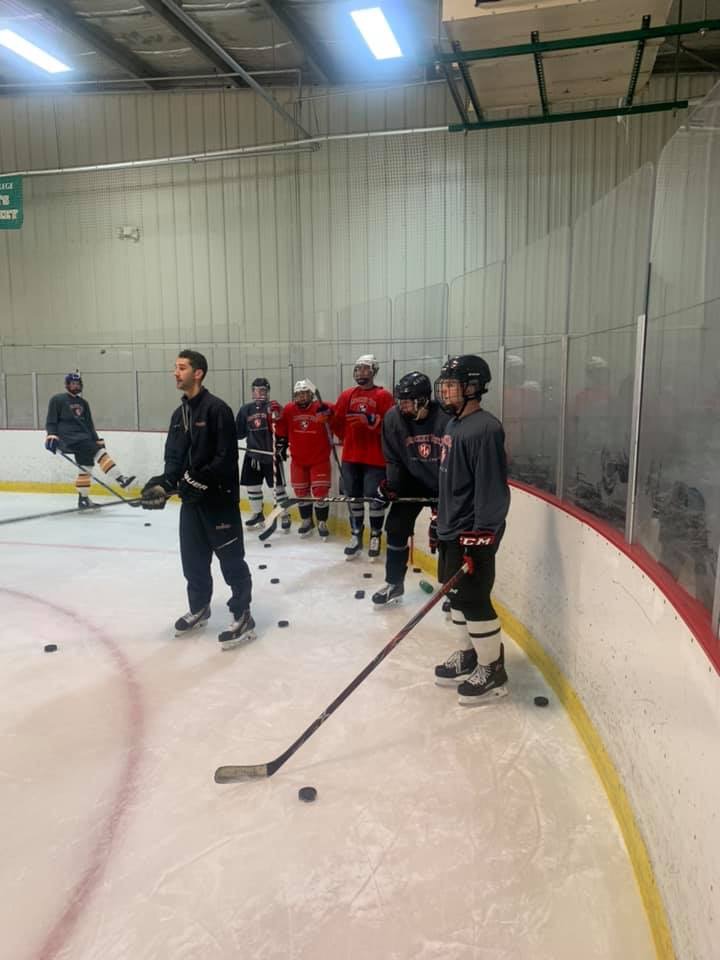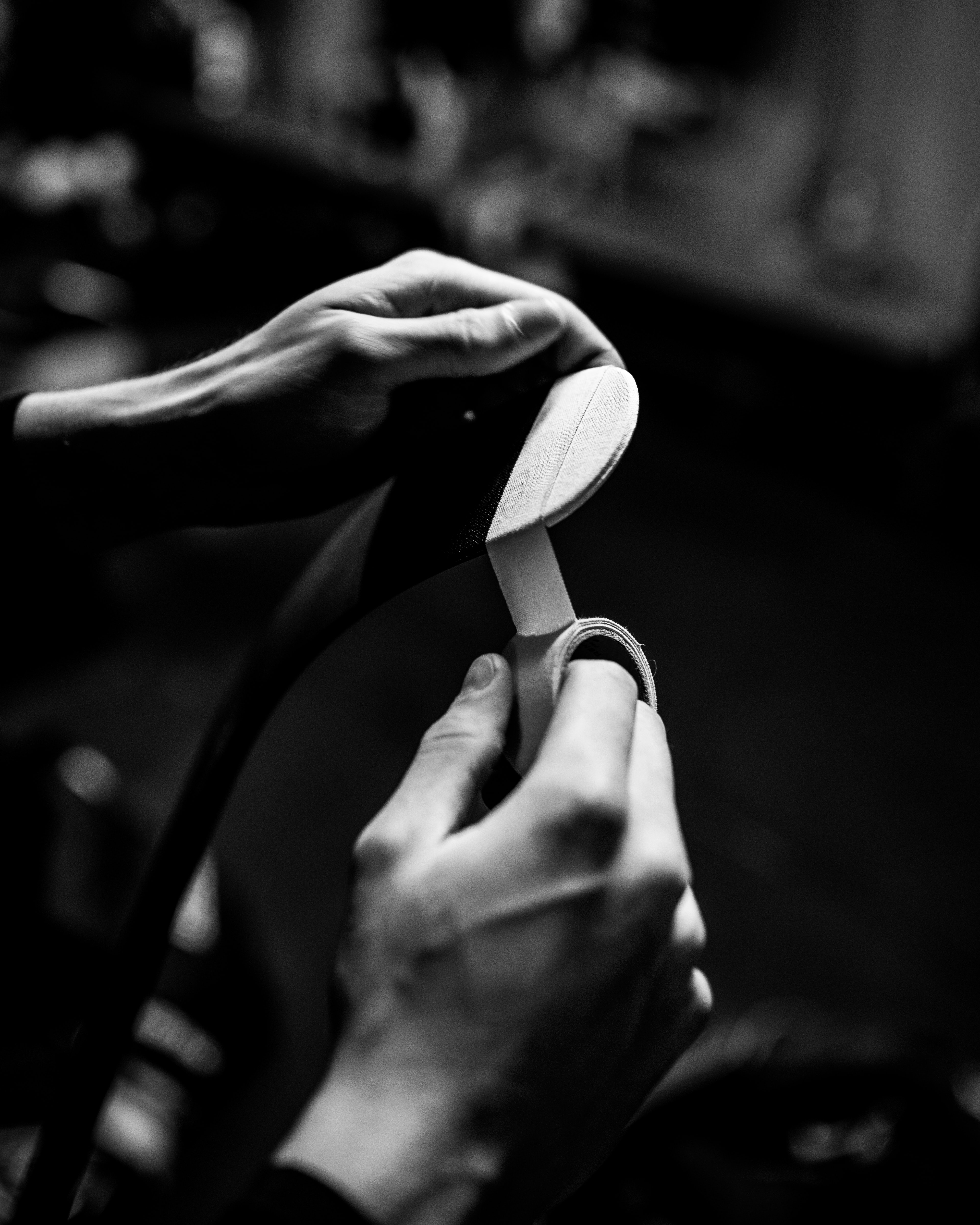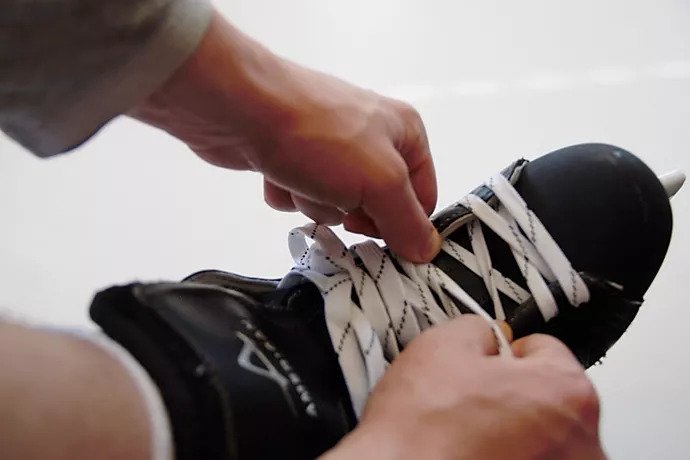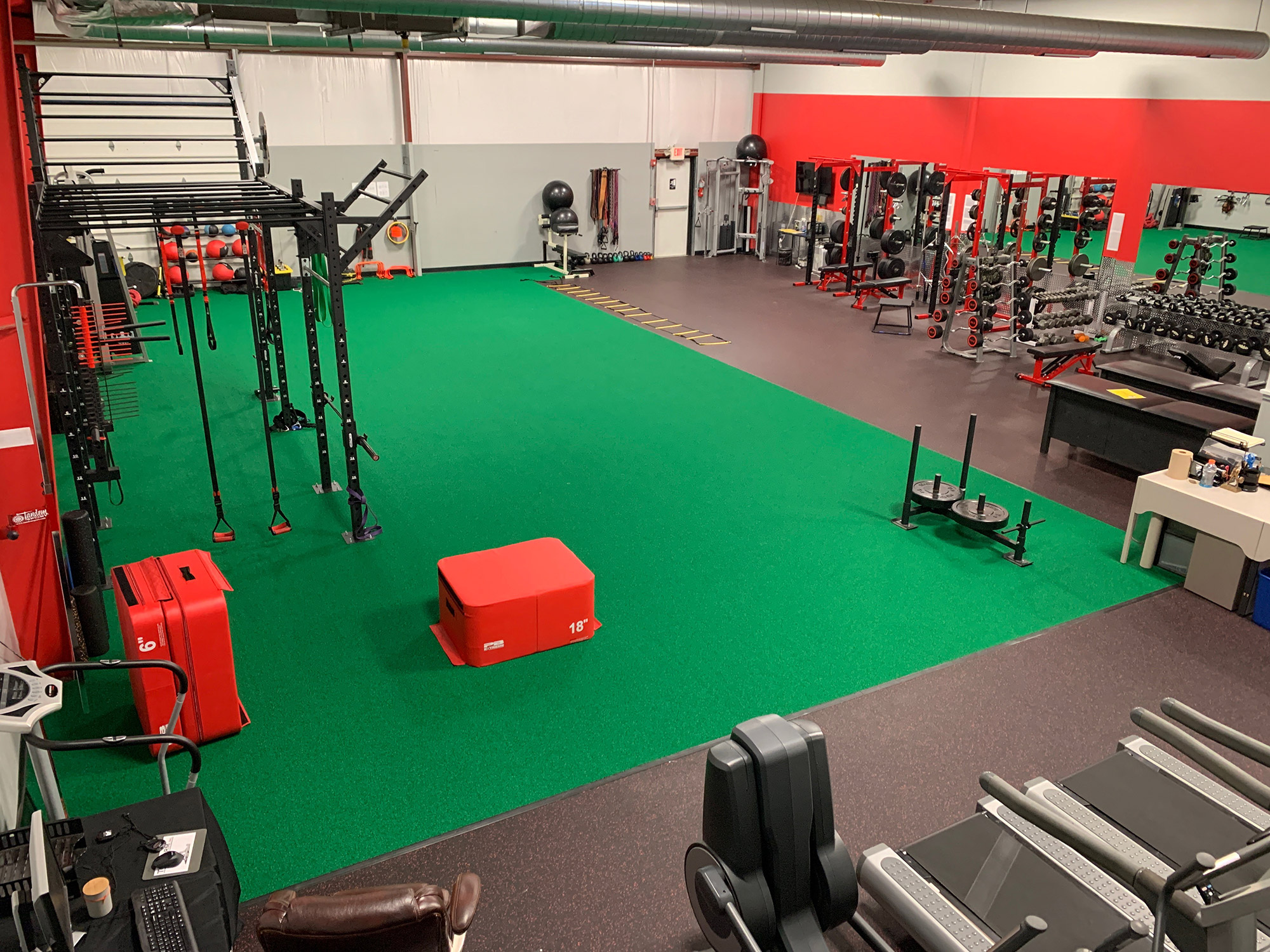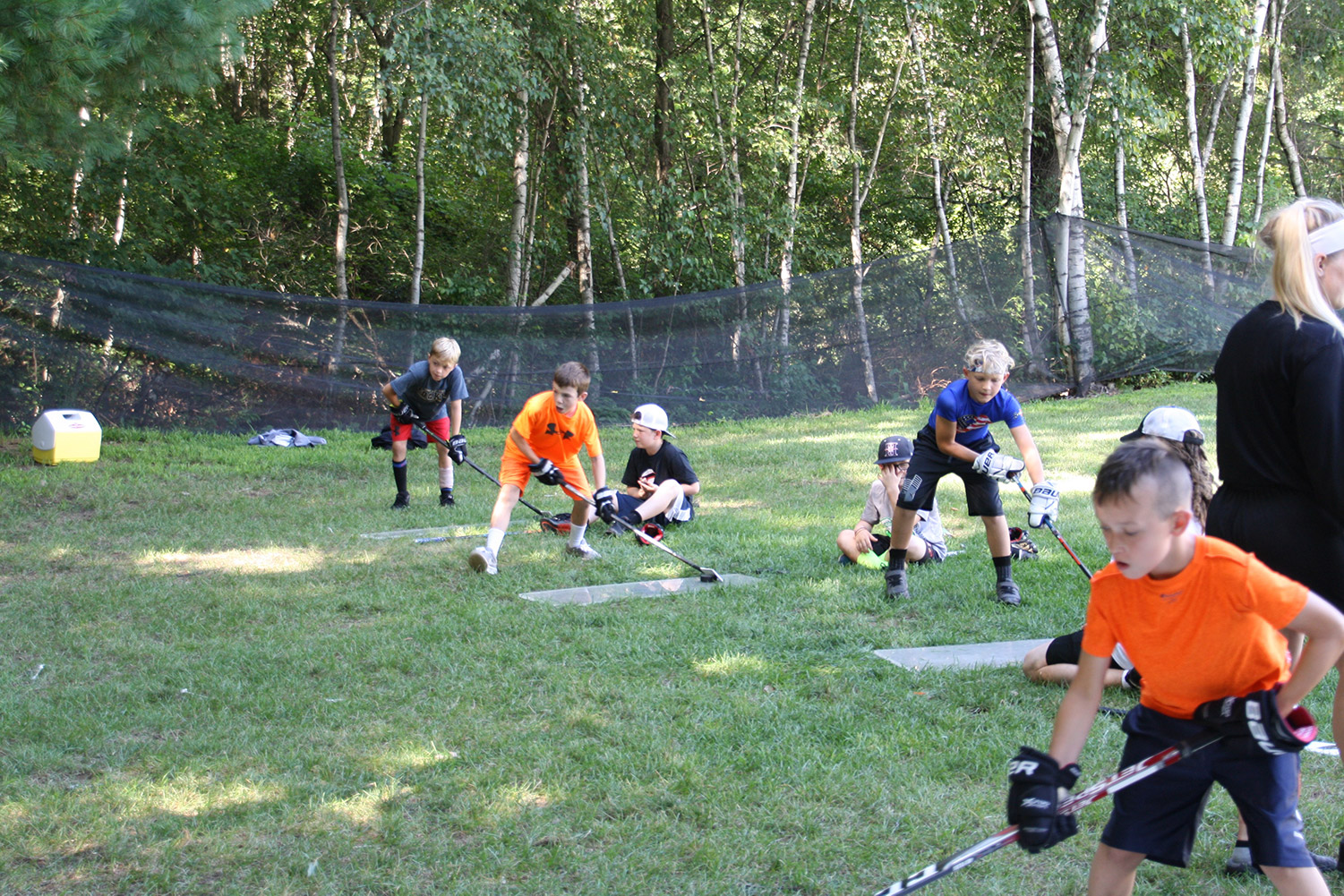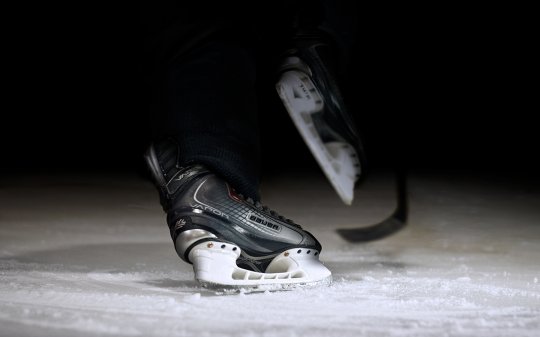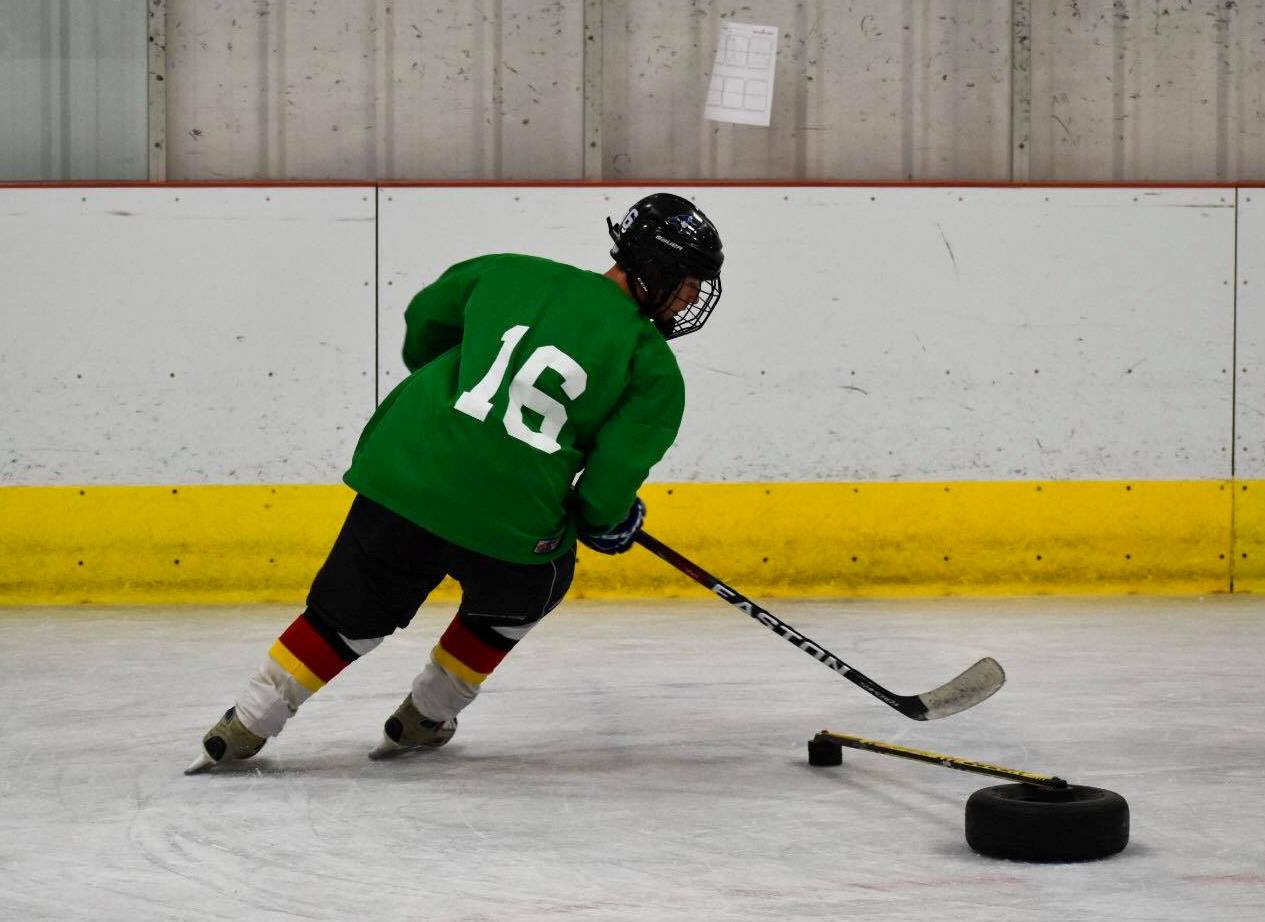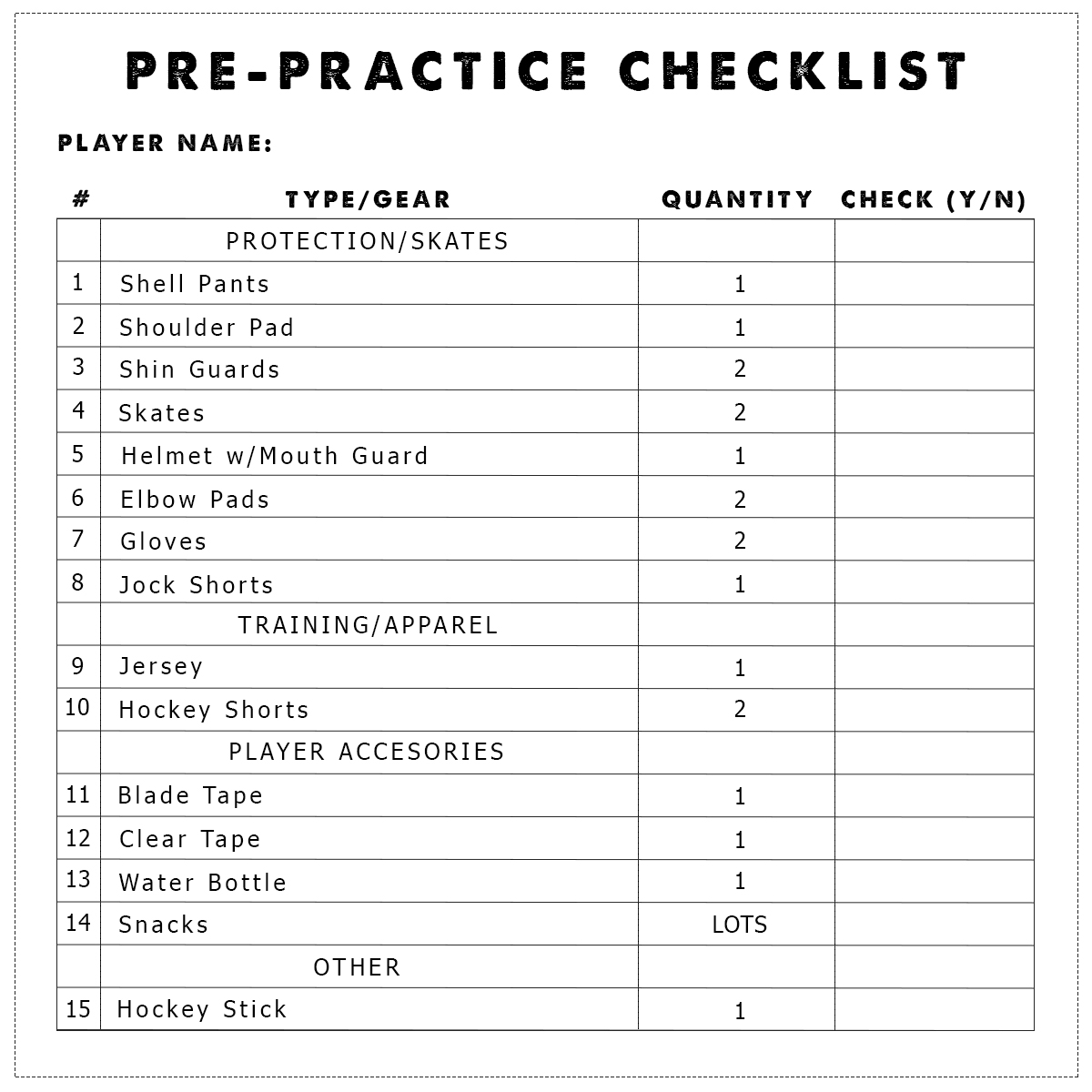Hockey How To’s
How to Be Ready For Tryouts
Hockey Hut How To: Be Ready For Tryouts
Tryouts can be a very intimidating process! They force individuals to showcase their skills and abilities in order to be considered for a specific team, program, or opportunity. During tryouts you are evaluated on a variety of factors including their physical abilities, technical skill, attitude, and potential for growth. The evaluation process is usually conducted by coaches, parents, or other coaching experts. An important note to remember when going through the tryout process is though they are highly competitive, as not everyone who tries out will be selected, tryouts can be a valuable learning experience that helps your player identify areas for improvement and set goals for future growth! If you want to make the team it’s essential to embrace your strengths and be true to yourself! In this video Ron Kuhl shares some helpful tips to help you stand out during tryouts!
First thing to remember is, it’s crucial to play to your strengths. If you are a goal scorer, focus on scoring goals. If you excel at defending, prevent the opposing team from scoring. Trying to be someone you’re not will not impress the coaches and could actually hurt your chances of making the team.
Second is, coaches value players with good character who work hard and do the little things right. Focus on things like back checking, positioning, and body language. Remember that making mistakes is inevitable, but it’s how you respond to them that counts.
Finally, show enthusiasm and demonstrate that you’re a team player. Coaches want players who love the game and are good teammates. Give credit to your teammates when they make good plays or score goals. Playing a team sport means that everyone needs to work together to achieve success!
Overall you want to make sure to encourage your player to do their best and be themselves. The worst thing for a player during tryouts is going in stressed out about making a team when they should be enjoying themselves! We hope these tips will help you succeed!
Good luck in your tryouts!
How to Tape Your Stick
Hockey Hut How To: Tape Your Stick
Taping your hockey stick is an essential part of getting ready to play hockey. It may seem like a small detail, but it can make a big difference in your game. Properly taping your stick can not only protect the blade from damage (for those parents looking to save money!) but it can also improve your control and feel for the puck.
When it comes to taping your stick, there are a few different techniques and styles to consider. Some players like Steven Stamkos prefer to use a lot of tape on their blades, covering the entire blade, while others like David Pastrnak use very little, only taping the bottom portion of the blade. The amount you use and the way you apply it is a matter of personal preference and can vary from player to player.
Check out this tutorial from Teagan on how to properly tape your hockey stick!
In this video Teagan demonstrates her preferred method of taping. She begins by tearing a small piece of tape and running it along the bottom of the blade before starting at the heel and working her way to the toe. One key technique she uses is overlapping the tape, which helps prevent tears and provides additional protection.
Ultimately, the key to a successful tape job is practice. The more you do it, the more comfortable you will become with your preferred technique and style. Don’t be afraid to experiment with different methods to find what works best for you!
How to Get Dressed for Hockey
Hockey Hut How To: Get Dressed for Hockey
There is nothing worse than having an equipment malfunction while you are playing hockey. If you want to learn how to properly get dressed and maximize your performance on the ice, check out this how to video!
- The first thing that you are going to want to put on is the jock. The jock holds your cup as well as holds up the socks that go over your shin pads. There are a few different types of jocks. (shorts, pants, and guarder belt)
- Next, we will be putting on the shin pads. You want to make sure that the shin pad is on the correct leg. The shin pad indicates which pad should go on which leg. Once you have the shin pad on the correct leg, tightly fasten the strap so that the pad doesn’t shift around.
- Next, we have the socks. The socks go over the shin pad and will velcro to the jock. It is important that when pulling the socks over the shin pad, the velcro doesn’t snag on the shin pads straps.
- Next, we have the pants. It is important to make sure the pants fit correctly. You want the bottom of the pants to resting slightly above the kneecap and the top of the pants to be slightly below the ribcage. Buckle the front of the pants and if it is too loose, you can tie the lace to your desired comfort.
- After the pants are on, you are going to want to put your skates on. Tying skates is a lot easier when the upper gear is not on. Parents, it is okay for your child to be fully dressed and then you tie their skates but you should keep in mind as they get older, they are going to want to tie their skates without the upper gear. If you don’t know how to tie skates, you can refer to our how to tie your skates video
- After the skates are on, you are going to put on your shoulder pads. Sometimes referred to as a chest protector. There will be 4 straps on the shoulder pads. 2 in the back and 2 on the shoulders. Start by reaching back for the velcro straps and bring them to the front velcro. Once they are secure, grab the strap on the shoulder, wrap it around your arm, and secure it to the velcro.
- After the shoulder pads are comfortable, you are going to put on the elbow pads. Place your elbow in the pocket of the pad. From there, you will need to take the velcro strap, wrap it around your arm, and secure it to the velcro padding.
- Now it is time for the jersey. Putting on the jersey can be difficult because it sometimes snags the back of the shoulder pads. Start by placing one arm through the jersey and then do the same with the other arm. Once your arms are in the jersey, pull the jersey over your head.
- Next up is the helmet. Once the helmet is on your head, there will be 3 straps. Start by buckling the strap that goes under your chin. The next 2 straps are on the cage. The helmet has two snaps on the backside where you will strap the buckles.
- Lastly, once you have all the other gear on, you can grab your gloves, grab a stick, and get on the ice!
How to Warm Up
Hockey Hut How To: Warm Up
Warming up before a game or practice is one of the most important things you can do in order to be ready when your skates hit the ice. Here is a how to video talking about different ways that you can warm up and be ready for the game or practice!
The body needs to be ready for your game or practice. Having a warm up routine will allow your body to be physically ready. This is also a great way to get you mentally focused on the competition and ready to go.
Here are some tips to help you warm up:
Dynamic Movement
- Start with a jog and progressively move into A-Skips. It is important when doing the A-Skips that you are getting you knees up and arms moving.
- Next, you will want to work on your rotation by jogging to the cone, turning and doing the A-Skips backwards.
- After the A-skips, you want to get moving laterally. Start with a jog to the cone and turn sideways for a lateral shuffle. From there, we will incorporate a karaoke shuffle with a crossover. This move is really helping the hips loosen up.
- Now the body is warming up, you are going to do a 70% run. Once you hit the cone, you are going to run at 70% of your max speed.
- After the run, you are going to do some walking lunges. Really emphasize the arm movement in this exercise.
Ballistic Stretching
- It is important to start with the dynamic movements before ballistic stretching because you don’t want to tear a muscle. You are going to want to start with a Frankenstein stretch. Swing your leg straight up and tough the toe with your opposite hand. (Left leg, right hand)
- The next stretch is the inchworm followed by the scarecrow. Start by keeping your legs straight as possible and bring your hands down and slowly walk your hands out and come to a plank position. Once you are in the plank position, you are going to walk your hands back towards your feet and slowly reach up to the sky. Bring your arms to a 90 degree angle and bring the back so you are opening up your chest.
- The next stretch is all about opening up the hips. Start in a push up position and bring one leg up and outside of your hands. From here, you want to take your inside hand, tuck under your other arm, and then bring it back through and reach for the sky. Do this a few times each side.
- Lastly, you are going to want to do a walking knee pull. Bring your leg back and grab it at the ankle. Pull the leg back and lean forward, reaching out your opposite arm. You should feel this in you quads
How to Stick to Your Resolutions
Hockey Hut How To: Stick to Your Resolutions
Have you ever made a resolution that you didn’t keep? If you’re like me, the answer is probably yes. On this how to video, I will be sharing strategies that will help you keep those resolutions!
My New Years Resolution was to shoot 100 pucks a day. It is important to have a plan when setting a resolution for yourself. Here are the 4 steps I used to help me keep my resolution!
- What is your new habit going to be?
- Shoot 100 pucks a day
- How do you anchor down this new habit?
- Create a routine
- How many pucks do we start with?
- If you want to shoot 100 pucks a day, start off with baby steps and work your way up to your goal
- Accountability
- How are you going to hold yourself accountable to achieve this resolution? For me personally, I use a calendar and mark out my goals for each week.
How to Tie Hockey Skates
Hockey Hut How To: Tie Your Skates
Tying hockey skates is not as difficult as you might think, but if you want a comfortable fit so you can spend long hours on the ice without your feet blistering, then tying your hockey skates correctly is going to be very important.
5 Simple Steps To Tie Your Skates
- Start by making sure your skates are loose enough to put on your foot. Loosen top two eyelets, pull the tongue back and put your foot in the skate.
- Once the skates are on your foot, start from the toe and pull each lace a little so it’s not loose.
- Go back to the top of the boot near the toe and grab each lace, and pull tight. To prevent each skate from becoming loose.
- For younger skaters, wrap your laces around your hand and pull, using all your force to tighten your skates.
- Time to tie them! With shorter laces, you don’t have to wrap around, tie like traditional sneakers in a double knot. If you have longer laces, people wrap them around skate to keep yourself from tripping on them on the ice.
Tips For Ensuring You Tied Your Skates Correctly
-
If you get out on the ice and are feeling like a bender, that means your skates are too loose around your ankles, so go re-tie them a little tighter.
-
If you get out on the ice and are feeling like your foot is no longer there and is getting numb, that means you tied it way too tight near your ankle and it needs to be a bit looser.
Taking Off Your Skates
When you’re done skating, you might feel too tired and cold and just want to take your skates off and leave ASAP. But if you don’t loosen your skates all the way, so your foot slips out with ease, you will kill your skate.
Yanking your foot out, or stepping on the heel will damage your skates. Respect the skate, take your time, and unlace the first few eyelets and then loosen the rest. Then, your foot should pop right out, and your skates will last longer.
Training Warm Up for Hockey Players
Warming up before any physical activity helps with conditioning the muscles and ligaments and putting the central nervous system into exercise mode.
Since skating and stickhandling places stress on the muscles, insufficient pre-exercise conditioning can make a player vulnerable to injury and reduce his/her effectiveness during a practice session or game. For this reason, professional players spend considerable time warming up on and off the ice before every practice or game.
Watch our Hockey Hut How To video for steps on how to warm up before practice
Sadly, efficient warmups in youth hockey are not always the standard. Off-ice warm-ups are typically never utilized properly.
Here’s a short list of excuses: late arrivals, suiting up your child in a 10×10 locker room together with the other 20 families, packed lobbies, and late practice starts. This will not help to form good habits, although in most cases, the real reason for skipping a warm-up is in the lack of prioritization by the majority of parents. Ironically, most of these parents will make sure to warm up properly before their own workouts, otherwise “bad things will happen, and working days will be missed”.
In the section below we will discuss several ideas of how to facilitate warmups for children of different ages, and we will review examples of routines.
For the off-ice warm-ups, possible answers to the “where?” question can be:
- At home, if your commute to the rink isn’t long
- Availability to find open space at the rink – empty hallways, unused fitness studios, passthrough under the bleachers
- Parking lot, if it’s safe
Key points for the On-ice warm-ups:
- Try to get your child on the ice as early as possible. Encourage him to do the warm-up drills, so they ease into their skating, avoiding the potential to pull a muscle.
- Stickhandling, with or without a puck.
- Your coach should start the session with pre-practice games for younger kids and warm up drills for the older kids.
Young Children:
Younger kids who are just learning to skate will not put a lot of training stress on their bodies. Putting the gear on and off and just gliding around the ice is challenging enough for them, so all physical activities are conducted as games or friendly competitions, otherwise, a child might lose interest. Off-ice warm-ups will help to form the right habits before practice, and the on-ice drills will facilitate structure and discipline prior to more complicated drills.
Example warm-up routine, ages 3-4
Off-Ice, 5 min
- Play a game that will include sitting/standing, jumping/pushing against the wall, swinging arms/legs and bending forward
On-ice, 10 min
- 2 min laps around the rink
- 2 min slalom between the tires
- 2 min inside edge pushes, alternate feet
- 2 min stickhandling, roll the wrists, no pucks
- 2 min tag game
Older kids
The game element is less essential here since the older kids are more self-motivated. The warm-up routine should include exercises targeting the full body or large muscle groups. The main difference between routines for different age groups is in the complexity of movement patterns and drill durations.
Example warm-up routine, ages 5-9
Off-Ice without hockey gear, moderate pace, 5-10 min:
| Exercise | Target Muscles/Ligaments |
| 20 jumping jacks | Full body |
| 10 wall squats | Glutes, quads |
| 10 toe stands | Calves, feet |
| 10 forward bends | Back |
| 10 arm rotations– 5 forward and 5 backward for each arm | Shoulders |
| 10 back extensions (superman) | Lower back |
| 15 knee or wall push-ups | Upper body |
| 10 forward-backward leg swings for every leg | Lower body |
On-Ice, 10 min:
| Exercise | Target Muscles/Ligaments |
| 2 min rink laps, moderate speed | Full body |
| 1 min stick side to side bends | Upper body |
| 1 min stick forward bends | Upper body |
| 2 min inside-outside edge transitions (hourglass) | Ankles |
| 10 static (or dynamic during gliding) squats | Lower body |
| 2 min stickhandling | Wrists |
| 1 min rink laps, high speed | Full body |
Example warm-up routine, ages 9 +
| Exercise | Target Muscles/Ligaments |
| 2 min jog (dynamic or static) | Full body |
| 1 min high knees | Core |
| 1 min butt kicks | Hamstrings |
| 20 squats | Lower body |
| 10 forward bends | Back |
| 30 sec mountain climbers | Core |
| 10 back extensions – “cobra” | Lower back |
| 20 Pushups (knee pushups for smaller kids) | Upper body |
| 10 forward-backward leg swings for every leg | Lower body |
| 10 90-deg head rotations, in both directions | Neck |
On-Ice, 12 min:
| Exercise | Target Muscles/Ligaments |
| 2 min rink laps with stick handling, moderate speed | Full body, wrists |
| 1 min stick side to side bends | Upper body |
| 1 min stick forward bends | Upper body |
| 2 min inside-outside edge transitions (hourglass) | Lower body, ankles |
| 2 min inside edge slalom | Lower body, ankles |
| 2 min outside edge slalom | Lower body, ankles |
| 1 min forward crossover, in both directions, moderate speed | Lower body |
| 1 min rink laps, high speed | Lower body |
Recap:
Warmups help to establish the correct training habits for smaller kids, and essential for older kids for optimal performance and injury prevention. For small kids, it’s more about keeping them active before the training session. For older kids, dedicating 15-20 min for the structured warm up prior to the main exercise block will improve performance and have long-term health benefits.
How to Maximize Your Lesson
How to Maximize Your Lesson
Private lessons are the perfect opportunity to work one-on-one to reach your desired goals. However, if you genuinely want to get the most out of your private lesson, it’s up to you to maximize your time on the ice. If you’re looking to maximize your lessons, build your confidence, and elevate your game, then follow these steps during your private lessons are the best way to reach that goal.
Come Prepared
When you walk into your lesson, know what you want to work on, or need to improve on. If your coach asks you what you need to work on, probably the last thing he or she wants to hear in response is, “everything.” And this response is not consistent with the idea of owning your training anyway. Be proactive by bringing a list of some skills or areas you’d like to focus on.
Positive Attitude
You’ve made a special effort to arrange a time with your coach and benefit from their expertise. Be happy about it! Use this time for collaboration, enthusiasm, respect, and engagement. Your coach might ask you to try new things – posture, drills, techniques. If your coach offers a suggestion, be open to it! Some things might work, and some might not, but having a positive attitude and a willingness to try keeps you open to learning and developing as a player.
Listen to Your Coach
It can be hard to let go of control or think you know best when you get on the ice for a private lesson. During your lesson, be intentional about listening to your coach and trust that there’s a reason why they are asking you to run those drills, practice your shot, or repeat a specific technique several times. Put all of your energy into executing the skills to the best of your ability, and let your instructor do the rest. You came to them for a private lesson for a reason!
Bring a Friend
A great way to get the most out of what you learn in your lessons is to have someone else in the lesson with you (not just your coach!). When you have a friend or teammate join your lesson, your coach can show techniques on the other person so you can see the details, and then you can do the same so the coach can watch and make corrections. You can work together to learn and refine your skills during the lesson, and afterward as well.
Take Notes
Whether you still use a pen and paper or your “notebook” is your phone, bring something where you can jot notes. Some instructors even allow you to film techniques during your lesson. However you take notes, take them so you can reference them later. If you don’t, you’re bound to forget a lot of the material by the time you find time to practice later on. It’s also helpful to go back to these notes weeks and months and even years from now when you want to brush up on a particular topic.
Ask For More
You’ve taken the time to train with a coach, but you want to continue working and developing your skills after the lesson ends. Whether it’s new skills to review, conditioning recommendations, or additional practice suggestions, ask your coach for clarity. Knowing what your next focus is will help you reach your goals, one step at a time.
You’ve got ways to maximize your private lesson, but you might be wondering, Is it worth it? We want to help you understand the value of your private lesson experience. Download your free guide below!
Are Private Lessons Worth It?
Sign Up to Get Your Free Guide
Hockey Gear Checklist
Make sure to print out this free printable for every hockey player and use it to be ready for every ice hockey situation! Keep your checklist handy and enjoy gliding through the season knowing your gear is organized.
Everything You Need to Know About Hockey Skates
Skating is what makes ice hockey so dynamic and exciting. That is the reason we have abandoned field hockey (just kidding).
Skates are important, but how does a person choose the right ones? Here, we consolidated all the essential information to get you started:
1. What Brand Should I Buy?
The largest share of hockey products are manufactured today by the Canadian companies-CCM and Bauer. Swiss manufacturer Graf is the third most popular skate maker, especially valued by the goaltenders. There are additional smaller companies and custom skate makers that we’re not covering here.
Products are separated by skate fit, stiffness and additional features: i.e removable blades, advanced liners, lace locking system, etc…
There are negligible differences in performance between similar products from different manufacturers, so the main problem to solve is finding a pair within the desired fit-stiffness-budget range.
Researching professional player’s gear is a common mistake and will not help you to make the right choice – chances are, your child’s feet are different from Crosby’s or Bergeron’s, his/her skating regiment is not nearly as demanding, and you are not sponsored by CCM or Bauer.
2. Skating Boots
Fit is the hands-down most important part of choosing skates. After that is stiffness. Everything else is optional or adjustable.
Length: skates are typically 1.5-2 sizes down from your regular shoe size. Ideally, when sitting down on a bench, there should be just enough room in an unlaced boot, so there is no toe-to-shoe contact, while the ankles are securely in place.
Width: this is just like with any other shoes – regular and wide sizes available. The skating boots won’t “break in” as much, especially for the young kids, so when in doubt, opt for the wider boot.
There are fans, advocates and haters of certain brands and models, however, these are all quality skates and any pair will work great as long as it fits right.
Most of the pro-shops will carry the 3D foot scanners, that will characterize your feet and point you towards the compatible products.
In the shop, skates should feel snug, but not painful. Some room for the feet to grow is fine but going 1.5-2 sizes up for the skate “to be good next season” will make your kid miserable and jeopardize his/her learning. It is important to remember that new skates will not feel comfortable – they are not sneakers. If your child is new to hockey, then he/she won’t have any idea how the skates should feel like, therefore if you’re reasonably sure you’ve got the right skate in hand, only address signs of extreme discomfort or pain – getting used to the skates will take time.
When buying your first pair, I recommend acquiring a second opinion about the fit from a trusted, knowledgeable person (a friend that plays, hockey coach, pro-shop team member).
Stiffness: Beginner skates are softer, advanced skates get progressively stiffer. Also, the softer the boot, the more comfortable it is – important mostly for the beginners. Try to bring together the 2 top lace eyelets with your index finger and a thumb: on a stiff boot, you’ll only be able to move your fingers for a few tenths of an inch.
Beginner skaters require only a fraction of support and stiffness compared to advanced and expert skaters, so putting a beginner into a pair of high-end skates will just make him/her miserable with the immobilized ankles, without contributing to his/her learning. Stiffer skates will also be more expensive due to the use of advanced materials.
Softer skating boots will give enough support to young kids. When kids start skating more aggressively stiffness can be reconsidered.
Skater’s weight considerations – heavy players will require stiffer skates since they need more support regardless of their skating abilities.
Common Mistake of Beginner Parents: When they see their child’s feet over-pronating (collapsing inwards) they tend to conclude that there is a need for a stiffer pair or try to put hockey tape to “stabilize” the ankles.
If the skates are properly tied, this over-pronation has more to do with the skate fit, your kid’s conditioning, and with the fact that it takes time to get used to standing upright on a pair of thin blades.
Bottom line – go as stiff as needed, but no more than that. Young beginners will be fine with medium to soft boots.
Everything Else:
Heat-moldable boots are recommended and will help with the fine fit adjustment, elimination of “hot spots”, and will quicken the break-in period. Skates can be “re-baked”, which is most important when buying a used pair.
However, if the skates are not fundamentally fitting the feet, heat mold won’t fix it. Graf skates, in exception, only rely on the heat mold, making their fit window smaller, compared to the CCM and Bauer.
Footbeds: Only the top-of-the-line boots will have high-quality beds. The rest will have only basic beds, which will not help much if your child pronates, even slightly. “Superfeet” branded beds are the go-to replacements, tried and approved by the skating community – recommended. Beds usually will not impact the fit, but make sure to verify it.
The tongue helps to keep the foot securely in the boot while allowing enough flexibility to support the needed range of ankle flexion. Lace bite is a big problem in hockey skating, and the tongue plays a major role in it. With that said, only the high-end boots come with the nicer tongues, and for the majority of skaters, dealing with lace bite becomes inevitable. Fortunately, simple undersocks with the gel pads like this product are cheap and very effective.
Laces: There are 2 types of laces – unwaxed and waxed. Until your kid fully adapts to the skates, stick with the unwaxed – those stretch when they get wet, making it a little easier for the expanding hot feet. In time you may try switching to the waxed, those are easier to lock, but they won’t stretch. You’ll need to experiment with the slightly tighter and looser laces until you figure out the optimum.
3. Blade Holders and Blades (Runners)
Steel (a part that comes in contact with the ice):
Stainless steel is a standard. Works great. Other types of steel are available from the original and second source manufacturers, but it’s hard to justify a need for steel upgrade for a beginner or an infrequent player. No bang for your buck.
Holders (a part that holds the steel runner): There will be slight design differences from manufacturer to manufacturer, but the two main groupings are the holders that allow the runners to exchange and not exchange. While buying non-exchangeable blades may seem like a waste, there is virtually no chance for learn to skate kids to reach the end of life of the steel on one pair – they will grow out of size long before the steel runs out.
With that, pro level holders that allow steel exchanges are a nice marketing option, that probably won’t ever be exercised on your kids’ skates.
4. Sharpening and Profiling (a geeky part)
Hockey blades are hollowed at the bottom and curvy (have a round shape) to allow quick turns and changing directions. This section covers the basics of blade configuration.
The Tadius of Hollow: This is the “notch” at the bottom of your skate steel, running through its entire length. The lower the radius the higher the edges of the “notch”, allowing a player to dig more into the ice. The first picture below shows the exaggerated cross-section of the blades with different hollows just to illustrate the concept. The second picture is to scale, and you can see only a subtle difference in the height of the edges, especially between the close radius settings.


½” radius is an accepted modern mid-point, a safe setting to begin with. Future choices are down to the player’s preference, he/she will need to experiment a little bit. No right and wrong here.
Blade Profile: Profile characterizes the blade curvature. Or how much of a blade length will be in contact with the ice, when a player is in a perfectly neutral stance – not leaning forwards or backward. The profile is expressed as a radius of a circle, that if cut into the slices 6-10” long, would have an exact shape of youth or an adult skate blade; it’s measured in feet.
Few popular profiles for the skaters are 9, 10, 12 and 13 ft. Goalie skates are almost flat, profiled to 25 ft. There are also multi-radius profiles, usually curvy in the front part and flatter at the back of the blade. In theory, the flatter the curve, the more stable the skate, but at the expense of agility and maneuverability.
Additional parameters are addressed by profiling, which is a skate pitch or a pivot point. It dictates the direction (forwards or backwards) in which your balance is affected when standing on the skates. For obvious reasons, a neutral pitch (not leaning forwards or backwards) is recommended for both beginners and intermediate skaters. Experts may have different considerations.
Is profiling an absolute must? No, just avoid the extremely short (<8) or long (>13) profile radius. Consider this:
- New blades come pre-profiled to 9 or 10 ft radius from the manufacturer and are neutrally pitched.
- Profiling provides marginal gains, achievable only at advanced and expert levels. Learners won’t feel the difference.
- Even if a player is skilled enough to notice the differences, there’s no other way to know the optimal profile for a particular player, without trying a few options. “Recommended” profiles won’t necessarily work for a specific stance and skating style.
To get an additional perspective, watch a few videos of the hockey hall-of-famer, like Bobby Orr, skating in the soft leather boots and using the unknown profiles. Pretty amazing.
If you have some extra cash on hand and feel adventurous – go ahead and try some profiles. No harm for sure.
Sharpening
This is a process of resetting a depth (radius) of hollow and cleaning/deburring the edges.
There are two basic types of sharpening machines:
Manual: stationary and a fairly large machine, requires a skilled operator for consistent sharpening.
Semi-automatic: very compact and portable compared to the manual sharpener. Designed for the repeatable operation without operator intervention.
Both types need to be properly calibrated to achieve even edges and can output different Radius of Hollow – make sure to specify your preferred one.
Try a sharpening shop in your area, and if something doesn’t feel right, give them a chance to correct it for you. Mistakes happen and most of the sharpeners are proud of their craft and will make sure you’re satisfied.
Used Skates
Younger kids don’t put on a lot of stress on their skates and are out of them too fast, so typically those skates are in good enough condition to serve 3-4 children.
Bring a knowledgeable person with you and use the same fit and stiffness criteria when shopping for used pairs as if you were buying a new one. Heat moldable boots will have an advantage here, since they can be re-baked for a new skater.
Look for the significant boot (inside and outside), blade holder (incl. the rivets) and blade steel damages – minor scratches and chaffing are the normal wear and tear, but the deep scars, torn stitches, and loss of integrity or missing material are a problem. Make sure the lace eyelets are well preserved.
If the blades look worn-out, allow a lot of sharpening cycles, look in the possibilities and of replacement – it might be more economical to buy a new pair.
The Most Important key point:
There’s no reason to hesitate too long when buying a perfect first pair of skates. As soon as you’ve found the right fit within your target budget – go for it.
Everybody is awkward on the ice at the beginning and having cheap or expensive skates won’t make a difference.
Want your kid to improve as fast as possible? Stop fiddling with the skates (and sticks) and invest in professional instruction.
No shortcuts here, expertise takes time, but kids learn fast with the right coaching…and then the exciting part starts!

